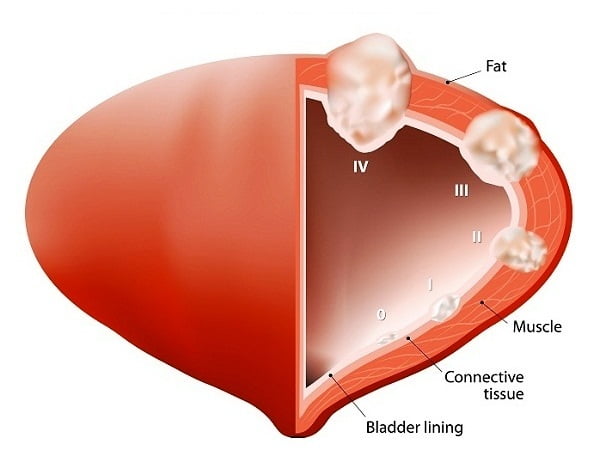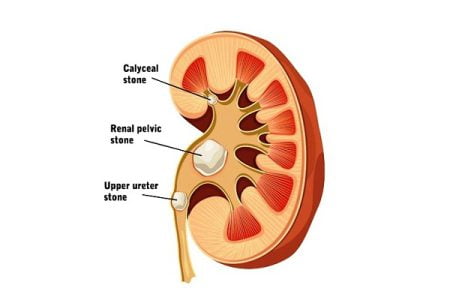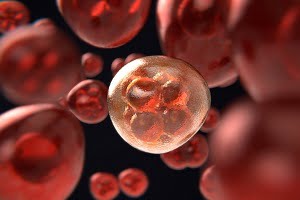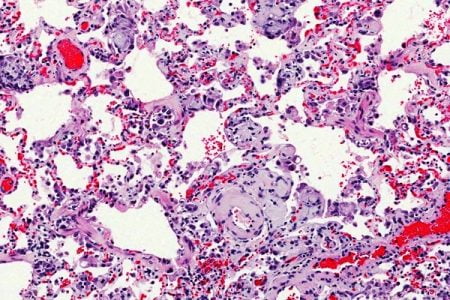Amyloidosis and Kidney Diseases
- Updated on: Nov 21, 2019
- 4 min Read
- Published on Nov 21, 2019

How Does Amyloidosis Affect Kidneys?
Amyloidosis is a rare disease without any cure. However, prompt and appropriate treatment can be useful in reducing and preventing symptoms and long-term complications. It is very important to understand the complications of amyloidosis so that we can talk to our doctor about the risk factors and preventive measures of this deadly disease.
Most commonly, kidneys are the first organs affected by amyloidosis. Accumulation of amyloid protein results in the formation of solid deposits that can stick in our kidneys. Unlike other types of excretory wastes, our kidneys are unable to easily excrete these deposits through urine.
When your kidneys get affected by amyloidosis and amyloid proteins become visible on biopsy, your doctor may diagnose you with light-chain amyloidosis (AL amyloidosis), earlier known as primary amyloidosis.
With the deposition of amyloid proteins, the kidneys slowly become overloaded with amyloid deposits which can ultimately lead to various serious complications like scarring, renal problems, bone disease, anemia, and hypertension. Also, you may experience swelling in the body, mainly in the ankles and legs.
What Types of Amyloidosis Affect the Kidneys?
Two types of amyloidosis specifically affect kidneys – Primary amyloidosis and dialysis-related amyloidosis.
(a)Primary Amyloidosis
Kidneys are the most common organs affected by primary amyloidosis. Formation of amyloid deposits damages the kidneys and makes it difficult for them to filter waste materials and break down proteins. When the kidneys become severely damaged, they become unable to function properly which ultimately leads to kidney failure.
Primary amyloidosis often leads to a condition called Nephrotic Syndrome, which involves a group of signs and symptoms that indicate kidney damage. Some of the common signs of Nephrotic Syndrome are:
- Albuminuria (presence of excess albumin protein in urine)
- Hyperlipidemia (presence of excess fats and cholesterol in blood)
- Edema (swelling of face, ankles, legs)
- Hypoalbuminemia (presence of less than normal amounts of albumin in the blood)
- Fatigue
- Shortness of breath
- Weight loss
(b)Dialysis-Related Amyloidosis
This type of amyloidosis is commonly found in people who already suffer from kidney failure and have been on long-term dialysis. In this type of amyloidosis, a specific protein called beta-2 microglobulin builds up in the blood because dialysis cannot remove it completely.
Dialysis-related amyloidosis is a complication of kidney failure because none of the types of dialysis (hemodialysis and peritoneal dialysis) can effectively filter beta-2 microglobulin protein from the blood. As a result, there are large amounts of beta-2 microglobulin protein in the blood of affected patients. Dialysis- related amyloidosis can show many symptoms. Some of them include:
- Pain and stiffness of joints
- Presence of fluid in the joints
- Anormal fluid-containing sacs, called cysts in bones which often lead to bone fractures
- Carpal Tunnel Syndrome (unusual buildup of amyloid proteins in the wrists)
Dialysis-related amyloidosis mostly affects bones, joints, and tissues that connect muscle to bone, called tendons. The disease may affect the digestive tract and other organs like the heart and lungs.
How are Primary and Dialysis-Related Amyloidosis of the Kidneys Treated?
Primary amyloidosis can be treated with the following:
(a)Medication therapy
It usually involves chemotherapy, the goal of which is to decrease amyloid protein levels in the blood. A combination of various medications is often recommended like melphalan (Alkeran), and dexamethasone. These medications prevent the growth of cells responsible for the production of amyloid proteins.
(b)Stem Cell Transplant
It is a procedure to replace a patient’s damaged stem cells with healthy ones. Before stem cell transplant, a patient is given high doses of chemotherapy. The transplanted stem cells travel to the bone marrow where they make healthy new blood cells.
(c)Treating Other Conditions
Primary amyloidosis has no cure. It is important to treat some of the side effects and other conditions associated with the disease. These conditions may include anemia, depression, fatigue, and kidney disease.
Dialysis related amyloidosis can be treated with medication therapy, effective hemodialysis filters, surgery, and kidney transplant. As such there is no cure for dialysis-related amyloidosis, however, a successful kidney transplant may stop the progression of the disease.
About Amyloid Nephropathy
Amyloid nephropathy is a disorder often caused due to abnormal deposition of amyloid proteins in kidneys. The incidence of amyloid nephropathy varies depending on the condition of origin. Amyloid nephropathy is often characterized by loss of protein in urine due to the improper functioning of kidneys. With the progression of the disease, the amount of protein loss in urine is increased which ultimately leads to renal failure.
Amyloid nephropathy can be treated either by two types of treatment – specific treatment and supportive therapy. Specific treatment is generally based on the type of amyloidosis while supportive therapy involves the management of nephrotic syndrome and renal failure.
Impact of Amyloidosis on Long-term Survival Rates in Kidney Transplants
Amyloidosis may have a great impact on the long-term survival rates of patients receiving kidney transplants. It has been found that patients who had end-stage renal disease (ESRD) secondary to amyloidosis had less survival rates as compared to patients with kidney disease secondary to some other causes.
According to a research published in “Experimental and clinical transplantation: official journal of the Middle East Society for Organ Transplantation”, researchers examined follow-up charts of patients who had a renal transplant between 1992 and 2016, identifying 48 patients for the study. It was found that almost half of patients had a kidney transplant due to amyloidosis related end-stage renal disease (ESRD) and the other half had kidney transplants following ESRD due to some other causes.
Besides, it was observed that among the 24 amyloidosis patients, the 10-year survival rate was 68.2% while as 86.1% survival rate was seen among patients without amyloidosis. At almost 20 years, it was found that 36.9% of amyloidosis patients were still alive compared with 60.3% of patients without amyloidosis.
The researchers also compared the amyloidosis patients who received kidney transplants with 25 dialysis treated amyloidosis patients. Patients receiving dialysis were mostly older and also had gastrointestinal involvement of amyloidosis.
Although there was no significant difference in survival rates between patients who had a kidney transplant and those who were treated with dialysis, patients in the latter group had an extensively shorter duration of time to death after initiation of renal replacement therapy,” wrote the researchers.











